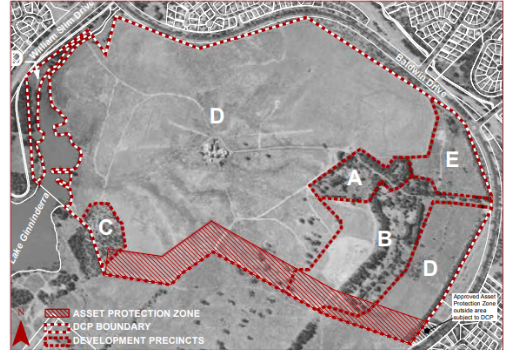The Conservation Council ACT Region is disappointed by Defence Housing Australia’s recently released revised development plans for Lawson North, noting that the proposal to construct single and multi-unit residences over critically-endangered natural temperate grasslands at the Belconnen Naval Transmission site will have significant negative environmental impacts.
Lawson north is home to the largest Natural Temperate Grassland in Belconnen, and an Aboriginal cultural landscape that holds thousands of years of story and song lines.
Of the approximately 416 residences to be built, 150 medium density dwellings will be retained by DHA for housing defence personnel, with the remaining residential dwellings on individual blocks to be sold to ACT residents to offset the cost of the Defence properties.
Helen Oakey, Executive Director of the Conservation Council ACT Region, said:
“The revised master plan shows that Defence Housing Australia is prepared to trade critically endangered habitats and threatened species to cross-subsidise housing for Defence personnel.
“DHA has informed us that only 150 additional dwellings are required on this site for defence personnel in the ACT. However, DHA is required to subsidise the defence housing by extending the development footprint and selling off blocks to the ACT public.
“That extended footprint takes the development into Natural Temperate Grasslands areas that should be protected under Federal environmental laws.
“DHA bought the site at Lawson in 2017, with the full understanding of its diminished capacity to support development as outlined in the planning rules issued by the National Capital Authority in 2013.
“DHA appears to be following a developer model to meet their obligations to provide housing for Defence personnel, whereby they redirect profits from housing sales on the open market. Ironically, the areas that are being developed for the open market are the areas with the highest environmental values.
“DHA needs to review the viability of this site and come up with a better location for the 150 dwellings required for defence families, and the grasslands at Lawson North should be managed in perpetuity for their important conservation values”, said Ms Oakey.
Professor Jamie Pittock, President of Friends of Grasslands said:
“The grasslands at Lawson are a quintessentially Canberran landscape. Once widespread across the south-east of Australia, less than 1% are now formally protected. The ACT is extremely lucky to have such a large and high quality remnant patch of Natural Temperate Grassland at Lawson. It’s destruction would be a big loss for the city and its unique nature.
“Although it may not look like it to the untrained eye, critically endangered Natural Temperate Grasslands, like those at Lawson North, are incredibly diverse. Over 500 native plant species call the habitat home and an even greater number of animal species, most of which are insects.
“The fauna found in these grasslands is highly unique. Some examples are the critically endangered Golden Sun Moth, the vulnerable Striped Legless Lizard and the vulnerable Perunga Grasshopper.
“Canberrans are proud of the unusual and unique wildlife that we have in the ACT. Protecting Lawson Grasslands means protecting the Territory’s nature to ensure that it can be enjoyed for generations to come,” said Professor Pittock.
Media contact: Madeleine Gisz, Communications Manager, Conservation Council ACT Region
Appendix

Figure 1: Map of Lawson Grasslands per National Capital planning code (note that Precincts A and B are identified as suitable for residential uses. Precinct C has been identified as a conservation zone for Kangaroos. Precinct D has been identified for heritage (natural, historic, cultural and technical) and nature conservation only. Precinct E has been identified primarily for nature conservation.)

Figure 2: Map of most recent proposed development
